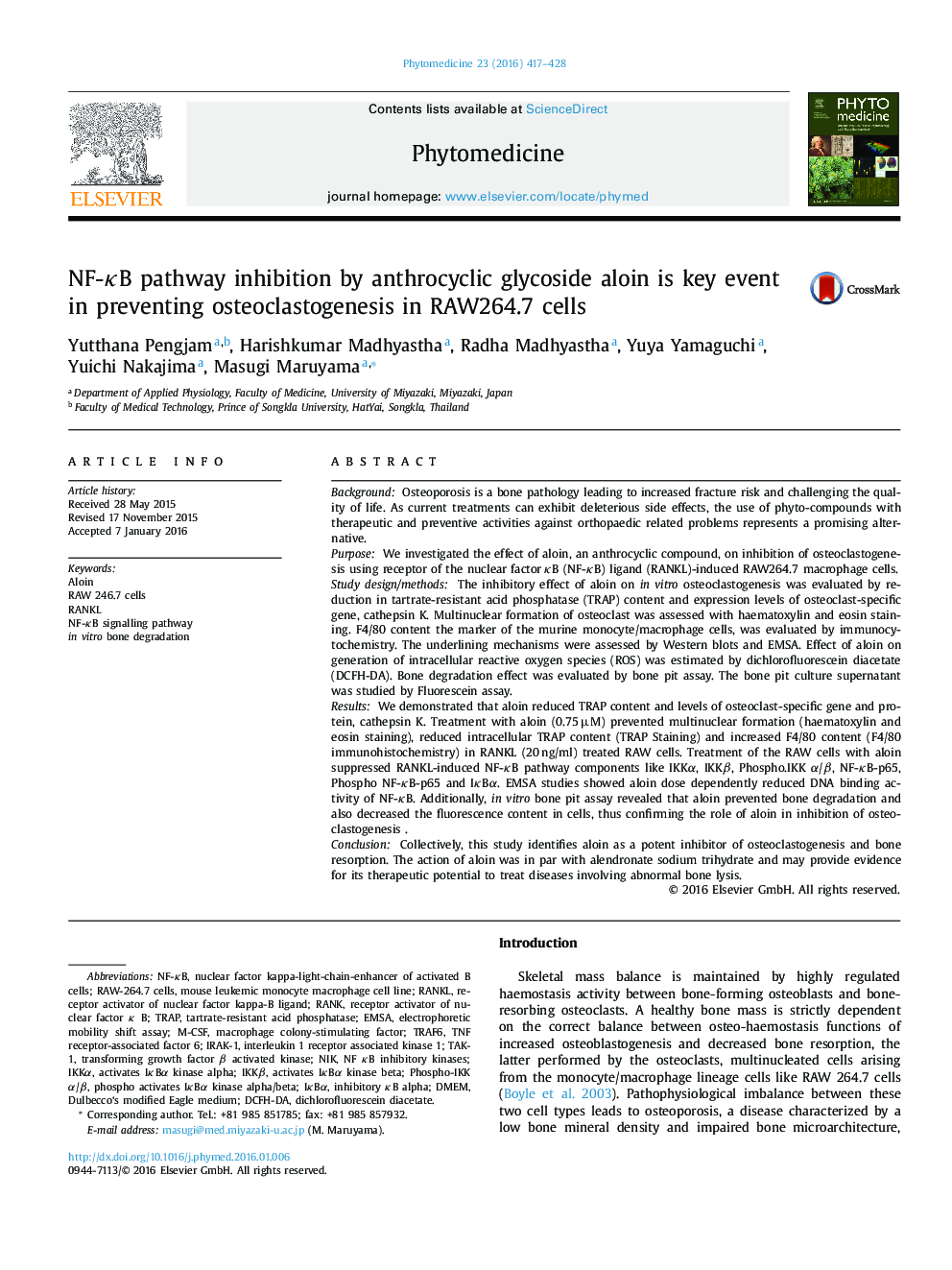| کد مقاله | کد نشریه | سال انتشار | مقاله انگلیسی | نسخه تمام متن |
|---|---|---|---|---|
| 2496321 | 1116122 | 2016 | 12 صفحه PDF | دانلود رایگان |

BackgroundOsteoporosis is a bone pathology leading to increased fracture risk and challenging the quality of life. As current treatments can exhibit deleterious side effects, the use of phyto-compounds with therapeutic and preventive activities against orthopaedic related problems represents a promising alternative.PurposeWe investigated the effect of aloin, an anthrocyclic compound, on inhibition of osteoclastogenesis using receptor of the nuclear factor κB (NF-κB) ligand (RANKL)-induced RAW264.7 macrophage cells.Study design/methodsThe inhibitory effect of aloin on in vitro osteoclastogenesis was evaluated by reduction in tartrate-resistant acid phosphatase (TRAP) content and expression levels of osteoclast-specific gene, cathepsin K. Multinuclear formation of osteoclast was assessed with haematoxylin and eosin staining. F4/80 content the marker of the murine monocyte/macrophage cells, was evaluated by immunocytochemistry. The underlining mechanisms were assessed by Western blots and EMSA. Effect of aloin on generation of intracellular reactive oxygen species (ROS) was estimated by dichlorofluorescein diacetate (DCFH-DA). Bone degradation effect was evaluated by bone pit assay. The bone pit culture supernatant was studied by Fluorescein assay.ResultsWe demonstrated that aloin reduced TRAP content and levels of osteoclast-specific gene and protein, cathepsin K. Treatment with aloin (0.75 µM) prevented multinuclear formation (haematoxylin and eosin staining), reduced intracellular TRAP content (TRAP Staining) and increased F4/80 content (F4/80 immunohistochemistry) in RANKL (20 ng/ml) treated RAW cells. Treatment of the RAW cells with aloin suppressed RANKL-induced NF-κB pathway components like IKKα, IKKβ, Phospho.IKK α/β, NF-κB-p65, Phospho NF-κB-p65 and IκBα. EMSA studies showed aloin dose dependently reduced DNA binding activity of NF-κB. Additionally, in vitro bone pit assay revealed that aloin prevented bone degradation and also decreased the fluorescence content in cells, thus confirming the role of aloin in inhibition of osteoclastogenesis .ConclusionCollectively, this study identifies aloin as a potent inhibitor of osteoclastogenesis and bone resorption. The action of aloin was in par with alendronate sodium trihydrate and may provide evidence for its therapeutic potential to treat diseases involving abnormal bone lysis.
Figure optionsDownload high-quality image (61 K)Download as PowerPoint slide
Journal: Phytomedicine - Volume 23, Issue 4, 15 April 2016, Pages 417–428